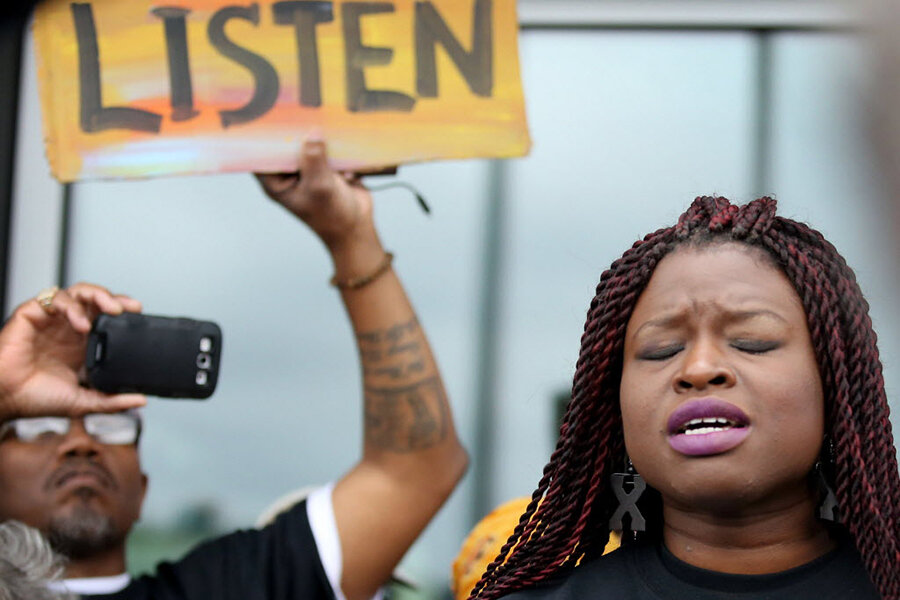No civil rights charges in Jamar Clark shooting: Why are standards so high?
Loading...
The Justice Department said Wednesday that authorities found “insufficient evidence” to pursue federal civil rights charges against the two Minneapolis police officers who fatally shot 24-year old Jamar Clark in November.
A comprehensive investigation into Mr. Clark’s death was not able to prove “beyond a reasonable doubt” that an officer involved intended to willfully violate Mr. Clark’s civil rights, the department said.
His family was informed of the decision Wednesday in a meeting with federal prosecutors and FBI officials, the department said.
The shooting sparked widespread protests and calls for more police accountability in Minneapolis. The decision not to prosecute the officers also reflects a larger trend – between 1995 and 2015, federal prosecutors declined to pursue civil rights charges 96 percent of the time, an investigation by the Pittsburgh Tribune-Review found.
In March, Hennepin County Attorney Mike Freeman also said the two officers, Mark Ringgenberg and Dustin Schwarze, would not face criminal charges because they said Clark was trying to grab one of their guns.
A key focus for federal investigators was whether Clark was handcuffed when the shooting occurred. The investigation concluded that evidence suggested Clark was not cuffed, a factor that could have impacted whether the officers were found to have used unreasonable force.
The high standard in civil rights cases, requiring that federal prosecutors prove beyond a reasonable doubt that an officer intended to violate a person’s rights, was a significant issue.
The standard that an officer’s action must be “willful,” established by a 1945 Supreme Court ruling, has been criticized, including at one point by former Attorney General Eric Holder, who said the standard was too high. But he never officially recommended changes before leaving office.
“This high legal standard – one of the highest standards of intent imposed by law – requires proof that the officer acted with the specific intent to do something the law forbids. It is not enough to show that the officer made a mistake, acted negligently, acted by accident or mistake or even exercised bad judgment,” the Justice Department said in a statement Wednesday.
The officers said they encountered Clark after he was interfering with attempts to aid an assault victim being tended to by paramedics. The officers told investigators they were attempting to restrain Clark when he resisted and ended up on the ground with Officer Ringgenberg.
While they were on the ground, the police said Clark had gotten his hand on Ringgenberg’s gun and Ringgenberg urged Officer Schwarze to shoot. According to the officers, Clark said “I’m ready to die” after they told him they would shoot. Schwarze then shot Clark.
But witness accounts differ. Nekelia Sharp, a neighbor, told the Minneapolis Star Tribune an ambulance was called after Clark got into an argument with his girlfriend. He was handcuffed and then shot while trying to talk to her as paramedics were taking her away, Ms. Sharp said.
Mr. Freeman, the prosecutor, had described varying witness accounts, including differences about whether one or both of Clark’s hands were cuffed. The federal probe said that neither an autopsy or an independent review found that Clark’s wrists had injuries consistent with being handcuffed.
Last year, the Minneapolis Star-Tribune found that since 2000, at least 143 people have been killed by police in Minnesota, while no officers have been charged in their deaths.
On Wednesday, the Justice Department described Clark’s death as “tragic,” noting that that several efforts had been launched to improve relations between the police and the community in Minneapolis.





